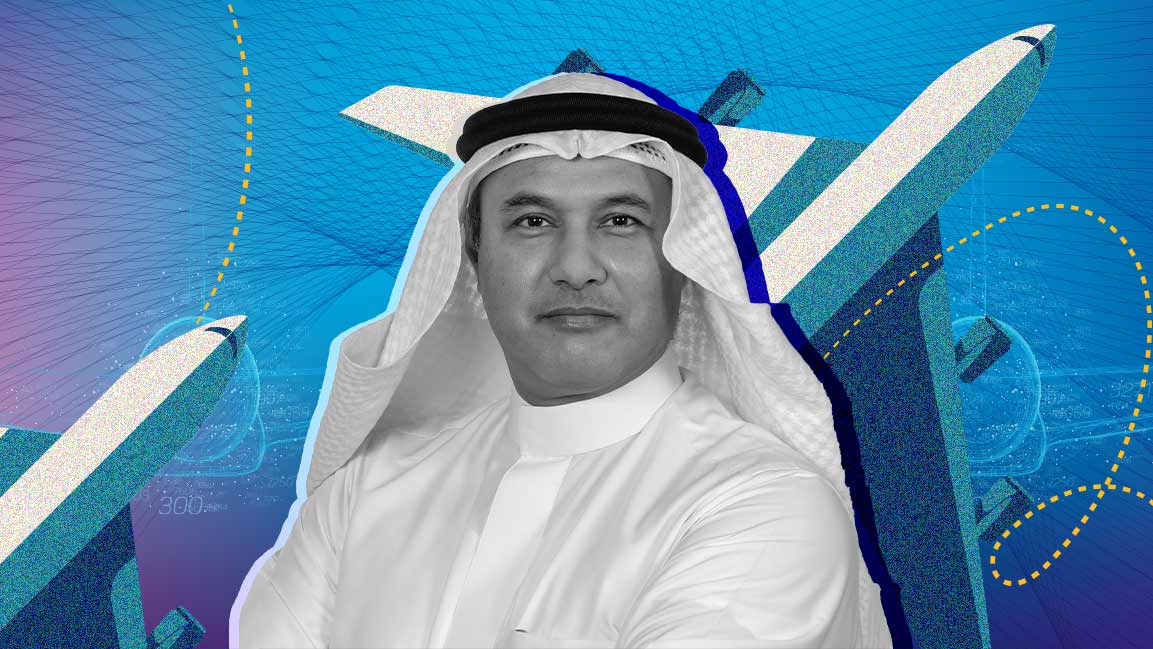- | 10:00 am
Saudia CEO is charting an ambitious flight plan for the carrier
Captain Ibrahim Koshy is highly optimistic about the national carrier's growth, with work on expanding its fleet to 241 aircraft and flying to more than 145 destinations by 2030.

Large companies have a long history of CEOs doing a few average things to “connect” and gain new insights.
In the airline world, Captain Ibrahim Koshy, CEO of Saudia, who has been a pilot for 30 years, says, “You have to understand what it means to fly passengers yourself and have their safety in your hands. Once you’ve experienced that, you know how important all the details are for your guests, the cabin crew, and the staff on the ground.
Koshy, who was the COO of Saudia before becoming its chief executive in 2020, says the time helped him “to observe, learn and take part in everything that makes an airline function and be successful.”
“I keep learning new things daily as I lead a workforce of over 13,500 staff, on whom I count to operate, run, fly, or engineer the aircraft.”
HUGE EXPANSION PLAN
The state-owned carrier plans to expand rapidly over the next seven years as part of a government strategy to transform the kingdom into a transport hub.
Saudia is focusing on a “huge expansion” to bring around 330 million visitors to Saudi Arabia by 2030 by growing its fleet and operations and launching more international destinations, its chief executive says in an explanation of its growth plans.
“This year, we have announced 11 new destinations and have significantly built up our fleet as we put in a Boeing order of 39 new 787 Dreamliner aircraft with the possibility of adding ten more. We received two new Airbus A321neo with 20 more to be added to our fleet by 2026,” says Koshy.
Formerly known as Saudi Arabian Airlines, the carrier has operated since 1945 when US President Franklin Roosevelt gifted it a plane. Now, its target is to have a fleet of 241 aircraft and to fly to more than 145 destinations by 2030.
Resurgent demand has been robust in the Middle East. According to an Oliver Wyman forecast, fleets in the region are expected to grow by 5% annually over the next decade.
With demand for better connectivity around the globe growing, he said more tourists and visitors were expected to come to the kingdom.
SUPPORTING TOURISM GROWTH
Apart from catering to the millions of religious pilgrims who visit Islam’s holiest sites in the kingdom, Saudi Arabia is shifting its focus to the tourism sector, hosting numerous cultural and entertainment events, like Formula 1 and E races and Riyadh season concerts.
“There are archaeological sites at AlUla, stunning diving spots on the Red Sea, and historical neighborhoods of Jeddah.”
Koshy says the airline has played a crucial role in supporting the growth of the kingdom’s tourism, business, Hajj, and Umrah sectors through strategic partnerships, expanding its global operations, and flying direct to more destinations.
“The aviation sector is still recovering from the Covid-19 pandemic, and our efforts to focus on and boost the kingdom’s air connectivity on both logistical and commercial levels have paid off, as we have restored 80% of our operations compared to 2019,” he says.
A new report highlights that the airline has transported over 13.7 million guests on domestic and international routes, representing a substantial 24% increase compared to last year.
Now, Koshy says, he is looking forward to the Asian Winter Games and hosting Expo 2030, which will play a crucial role in the country’s economic diversification efforts.
“Promoting key sectors, such as tourism, entertainment, culture, and transport, are essential for Saudi Arabia to become one of the top destinations in the world,” he says, adding, “It is our responsibility to showcase Saudi Arabia’s ambition, and help bring the country’s visions to life.”
SUSTAINABILITY IN AVIATION
And for that, Koshy says the airline is investing “massively” in new technologies to improve customer experience and safety and make flying more sustainable, considering carbon emissions that an enormous expansion will create.
“Sustainability is not just crucial to the aviation industry, but to every industry as climate change has become a global threat to humanity that we should all prepare for.”
Saudia has been investing in various sustainability projects and new environmentally friendly initiatives, including promoting sustainable tourism in cooperation with the Ministry of Tourism.
“We continually strive to improve our environmental performance, whether in our operations, in the air, on the ground, or throughout our entire supply chain,” Koshy says.
“We are investing in fuel-efficient aircraft such as Boeing 787 Dreamliners, Electrical Vertical Take-off and Landing jets with Lilium, as well as the order of CFM International LEAP-1A engines to power our new fleet of Airbus A321neo aircraft.”
Last May, Saudia operated the world’s longest net-positive flight, offsetting 346 tons of carbon emissions, including radiative forcing impacts by a factor of two, for commercial passenger flight SV227 from Jeddah to Madrid, making the flight net-positive.
Now, to meet passengers’ ever-increasing expectations, Koshy reveals that the airline is “working on a large-scale, ambitious digital transformation plan.
“We will unveil in due course.”








































